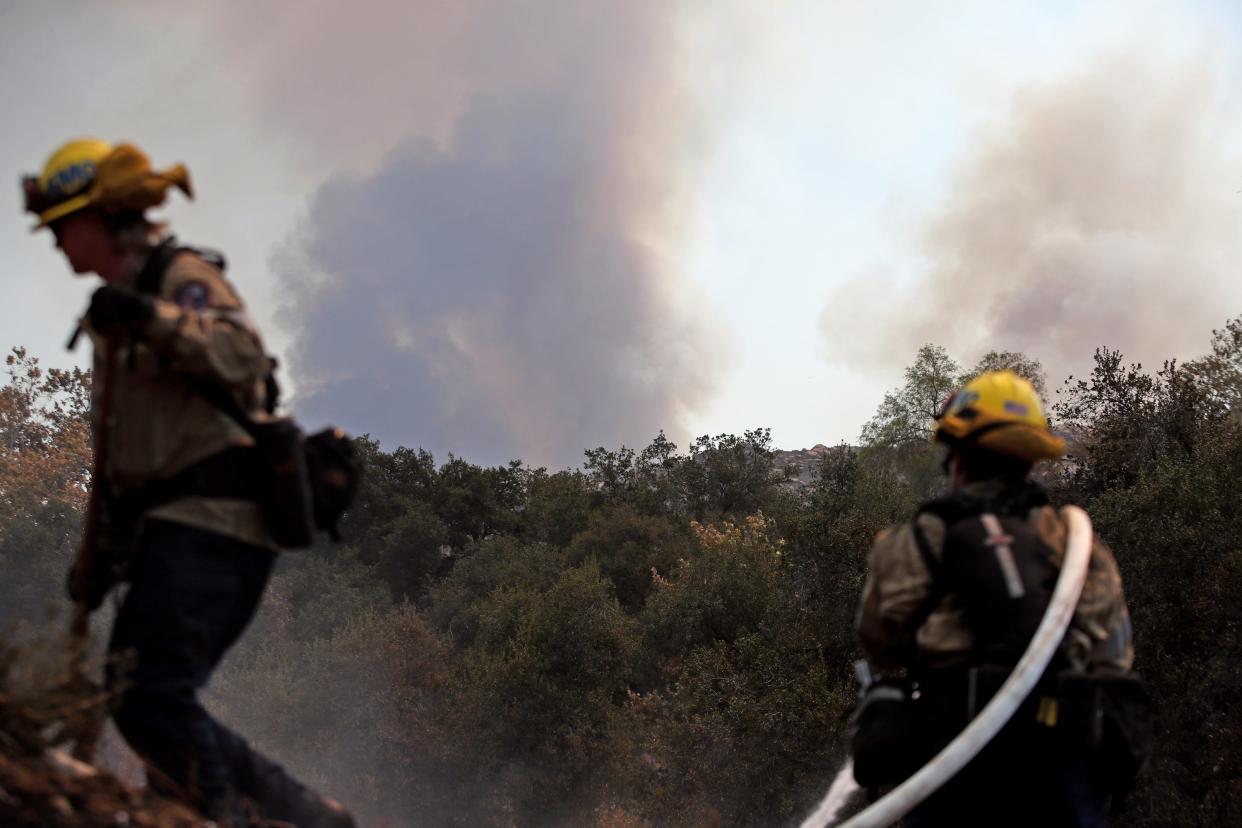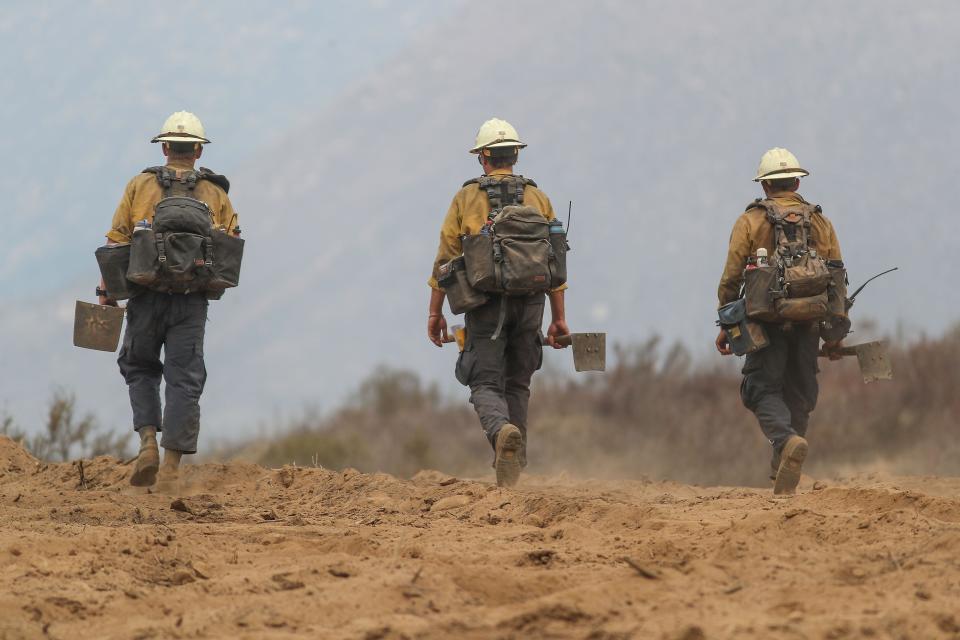‘Fire weather days’ are increasing in the Inland Empire faster than rest of the country

Warm temperatures, windy conditions and low relative humidity make up the recipe for a “fire weather day,” and in hot and dry inland Southern California, all of these conditions are increasing, resulting in more days each year that are primed for wildfires, according to a new analysis released today by nonprofit Climate Central.
The analysis looked at temperature, humidity and wind conditions using data from 476 weather stations across the 48 contiguous states over the 50-year period spanning 1973 to 2022, and found that wildfire seasons are lengthening and intensifying, especially in parts of Southern California and throughout the broader Southwest.
“What we’re looking at is not necessarily the frequency of fires, but more the weather conditions that promote extreme fire behavior. We’re looking for places that are seeing more hot, dry and windy days ... Across all of the Southwest, and especially in Southern California, we’re seeing the largest increases in these days,” said Kaitlyn Trudeau, a climate scientist at Climate Central who led the analysis.
Climate Central, a group of scientists and communicators focused on climate change, looked at weather changes in geographic climate divisions established by the National Oceanic and Atmospheric Administration. Out of 245 climate divisions across the contiguous U.S., inland Southern California is experiencing the biggest increase in “fire weather days.”
In California’s southeast desert basins division, annual fire weather days have increased by 63 days on average since the 1970s, a bigger increase than any other region in the analysis. The southeast desert basins region includes most of San Bernardino County and eastern Riverside County, all of Imperial and Inyo counties, and parts of Los Angeles and Kern counties.
The region now experiences an average of 83 fire weather days each year, roughly two more months of fire weather days each year compared to the 1970s.
Following the southeast desert basins in the top 10 regions for increased fire weather days are three regions of New Mexico, each with an average increase of 59 days. Rounding out the top 10 are parts of Texas, Nevada, Arizona and Colorado. Overall, increases in fire weather days were higher in the western interior regions compared to western coastal regions, which typically have higher levels of humidity.

'A perfect storm'
Weather, topography and fuels make up the “fire behavior triangle,” or the three main factors that determine how quickly a wildfire can spread. Trudeau notes that there are locations that might meet the criteria for fire weather, but not be at high risk for a fire because of the actual vegetation conditions and topography.
The Climate Central analysis focused on three meteorological conditions that play a large role in fire weather, and defined a “fire weather day” as one where three conditions are met:
Temperature of at least 45 to 55 degrees Fahrenheit, depending on season
Sustained wind speeds of 15 miles per hour or greater
Relative humidity within 5% of specific regional thresholds defined by NOAA’s Storm Prediction Center. These regional thresholds are based on local fuel type, or vegetation, and local climate.
These thresholds are based on those used by NOAA’s Storm Prediction Center for an “elevated fire weather forecast,” which is the agency’s lowest fire risk category and doesn’t rise to the level of a Red Flag Warning.
In the inland deserts region, it might feel rare to have a day below 55 degrees — but those cooler days are becoming more and more infrequent due to climate change, and the number of windy and dry days with low humidity are also on the rise.
“What’s driving these increases across most of the West is the increase in dry days, which is connected to how climate change is increasing our temperatures, increasing evaporation from our landscapes, plants, soil and vegetation, which causes a serious situation on top of other things like a long-term drought,” said Trudeau.
Trudeau called the combination of warm temperatures, wind and low humidity a “perfect storm,” creating conditions where a lightning strike or cigarette flicked out of a car window could grow into a fast-moving wildfire.
“It’s not that this weather is what causes the fire, but if a fire breaks out, the chances of that fire becoming a much bigger fire much faster are increasing due to the presence of these weather conditions,” said Trudeau.
The analysis was limited by the number of weather stations available with hourly data dating back to 1973, and used data from a total of 476 stations across 245 climate divisions. However, some climate divisions only had one weather station that met this criteria, which limited the data because each climate division could span multiple counties and local regions, each with their own weather. The analysis used seven weather stations in California’s southeast desert basins region, but the stations with available data were mostly at airports located in desert areas, without representation from more forested mountain areas.
More risks for homes, public health
More fire weather days each year means more people and property are at risk from wildfires, especially in California, where over 5 million homes are located in the wildland-urban interface, where development occurs in areas with high wildfire risk.
Increasing fire weather days could also mean more power shut-offs by utility companies due to elevated fire risk, as well as fewer days where weather conditions allow for prescribed burns.
And even for Southern California residents who don’t live in the path of wildfires, fire weather still brings elevated public health risks. In Riverside County, for example, many of the days with the worst air quality last year occurred while wildfires burned nearby.
This article originally appeared on Palm Springs Desert Sun: Inland Southern California experiencing more fire weather days

